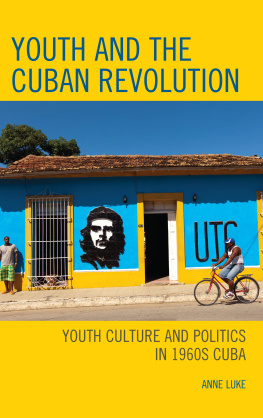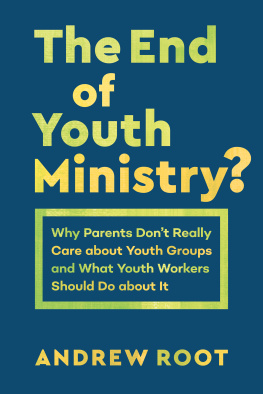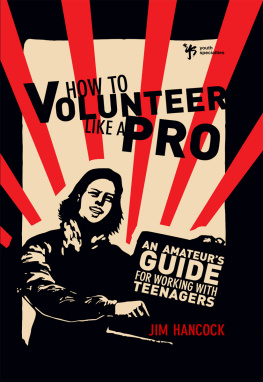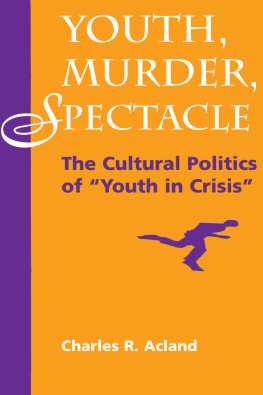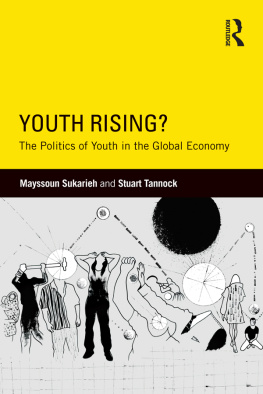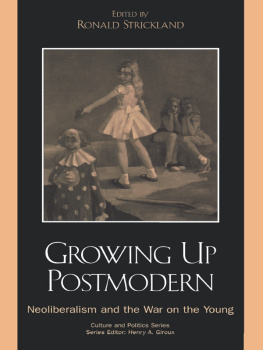The paper in this book meets the guidelines for permanence and durability of the Committee on Production Guidelines for Book Longevity of the Council on Library Resources. The University of North Carolina Press has been a member of the Green Press Initiative since 2003.
Portions of this work appeared earlier, in somewhat different form, in The Blue Jean Generation: Youth, Gender and Sexuality in Buenos Aires, 195875, Journal of Social History 42:3 (Spring 2009): 65776, and Rock nacional, Revolutionary Politics, and the Making of a Youth Culture of Contestation in Argentina, 196676, The Americas 70:3 (January 2014), and are reprinted here with permission.
Acknowledgments
This book was started during my time at Indiana University. My greatest debt is to Danny James. I will be always grateful for his intelligence, hospitality, and friendship. I would also like to thank Arlene Daz, Jeff Gould, and Peter Guardino, who were friends and professors all along. They all nurtured my understanding of Latin American history and were living examples of how to conduct historical research. At the beginning of my graduate studies, I had also the fortune of working closely with Joanne Meyerowitz, who contributed to shape my understanding of the history of sexuality and gender in numerous ways.
Research for this book was completed with fellowships and grants from the Social Science Research Council, Indiana University College of Arts and Sciences, and especially the American Council of Learned Societies, which, with the support of the Andrew Mellon Foundation, awarded me one of its Early Career and New Faculty fellowships. While I was conducting research in Argentina, I found the guidance of many librarians, archivists, and private collectors. Among all of them, I would like to single out Jos Robles, in charge of the Archive of the Facultad of Filosofa y Letras at the University of Buenos Aires, and Daniel Ripoll, who preserved a magnificent collection of Argentine rock. Like most archivists in Argentina, their work is based more on personal sacrifice and commitment than on institutional support, and I truly appreciate their generosity in making their materials available to me. I am also greatly indebted to the many people who shared with me their memories of being young in the 1960s and 1970s in Argentina. Elaine Maisner at the University of North Carolina Press has been encouraging and constructive, even when this book was no more than a project. Readers will surely appreciate the editing that has been done by Ron Maner and John Wilson.
A great many other colleagues and friends provided support, encouragement, and ideas over the years. Besides being pioneers in the study of youth issues in the Latin American 1960s, Eric Zolov and Patrick Barr-Melej were superb and generous interlocutors. The same holds true for Ben Cowan and James Green. In the United States, many other people read or heard portions of this manuscript and made enriching and valuable comments. They include Paulina Alberto, Dain Borges, Christopher Dunn, Eduardo Elena, Paul Gootenberg, Donna Guy, Temma Kaplan, Rebekah Pite, Margaret Power, Karin Rosemblatt, and Mary Kay Vaughan. Matthew Karush and an anonymous reviewer, both assigned by the University of North Carolina Press, made wonderful suggestions for the manuscript, which helped substantively improve this book. I am particularly thankful to two people in Argentina: Juan Carlos Torre and Alejandro Cattaruzza. At times when I was doubtful of the significance of this project, Juan Carlos convinced me that it was important to study the era of youth, as he calls it. Alejandro was close to this project from its inception: he made me think twice in order to circumvent truisms, and he was always willing to share ideas and memories. This project also benefited enormously from informal and formal conversations with, and the insights of, Omar Acha, Pablo Buchbinder, Lila Caimari, Adrin Gorelik, Mirta Lobato, Mariano Plotkin, Mara Ester Rapalo, Juan Suriano, and Hugo Vezzetti. I could not be more fortunate than having had two fellow travelers in studying the sixties otherwise: my friends and colleagues Isabella Cosse and Karina Felitti.
Friends and family collaborated with this project in myriad ways, basically by making my life better. Many thanks to my friends and colleagues Cristian Aquino, Pablo Ben, Leandro Benmergui, Irene Depetris Chauvin, Ariel Eidelman, Laura Ehrlich, Katharine French-Fuller, Paula Halperin, Marlene Medrano, Mollie Nouwen, and Elena Scirica. Although for years we have been thousands of miles apart, my parents and my sister, Virginia, have succeeded in making the distance shorter. Because my parents themselves were young people in the 1960s, my conversations with them about this project were a constant reminder that it was worthwhile. Most crucially, their love and companionship were a bastion for me. As an example of a scholar, as a source of motivation, and as a loving elder sister, Virginia has always remained close.
Lastly, I thank Mauro Pasqualini who contributed to this book in countless ways. Mauro neither read every word I wrote nor tolerated all my obsessions when writing this book, and I thank him for that. I also thank Mauro for his unfailing confidence, for his intelligence and sense of humor, and for enriching my life. Our son Lucio arrived in this world when this book was close to an end. Life has been more rewarding ever since.
The Age of Youth in Argentina
Introduction
The Age of Youth
In September 1966, the weekly magazine Confirmado published a long report on youth to explore whether or not a unified youth consciousness and experience had spread in Argentina like, the reporter posited, it had in postwar Europe. The answer was not conclusive. On the one hand, the reporter claimed that only by fantasizing could one view a link between Rubn, twenty-five, a construction worker who migrated from Santiago del Estero to the Greater Buenos Aires area, and Ricardo, twenty-one, an entrepreneur from downtown Buenos Aires. Moreover, he found even fewer connections between them and Ana, seventeen, a secondary school student from the lower middle class. On the other hand, the reporter did find commonalities. First, although their choices differed, the interviewees showed a particular engagement with young music idols and were willing to spend their money and time following them. Second, while the construction worker had stated his fondness toward Peronism, and the entrepreneur his taste for social democracy, the reporter thought that young people held a similar moderate and rational attitude toward politics. Third, if there was one realm about which young people agreed (and diverged from their elders), it was sexuality: they accept premarital sex without prejudices, the reporter argued, but they keep tying sex to love and marriage. Only one among a myriad of reports the media ran throughout the 1960s, this one was unique in its interrogation of the category of youth (


